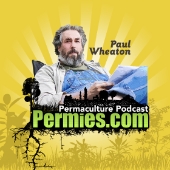Jeff Marchand wrote:
Its so ironic that many towns replaced their dead elms with ash trees. Now that EAB is here we are back to square one!
I am hopeful that elm will evolve a resistance to DED but not in my lifetime. Or yours or our great grandkids.
Actually I'm more hopeful about the American elm comeback than many....it's uncertain at this point whether some of the newer stock is just tolerant to the fungus or truly resistant [ and see
http://www.nebraskafarmer.com/blogs-american-elm-set-comeback-11296 ] But we are working with both natural selections from elms around our property that are still huge and thriving while being surrounded by DED-killed community members as well as commercially-available stock sold as being DED-resistant. The commercial material is not without some drawbacks. We have a 'Valley Forge' that is still young and alive while others nearby have croaked, but we did not realize the following until almost too late:
"....not all elms are the same. Valley Forge elms, with their explosive growth in all directions, need far more pruning than Princeton elms.....
....the reasons to prune are not only esthetic but also for the health of the tree. The first apparent reason to prune young elms is to enable them to develop their optimum form: that wonderful umbrella shape we all desire. The more fundamental reason is to avoid a potential weakness later on caused by the growth of multiple stems or leaders. Not only elms but maples have this tendency, causing stress and ultimate breakage of the branches. Side leaders – major branches taking over and eclipsing the vertical leader – a potential issue with these species, are no longer a problem when pruned at a young age..." --
http://www.wmassmastergardeners.org/0403.htm
Yeah...we didn't prune. And with even moderate wind-storms, saw many of the side branches split from the tree at the limb-joint. We are hoping that late pruning will rescue some of these but were not aware of the problem when first planted.
On a second note, I must admit to just using a splitting maul on our elm wood, but not splitting the really knotty stuff at all....just chainsawing the knotted section into as small a piece as possible to put whole into the woodstove, like a lump of coal. But the crucial part here as well is *when* to split: Sub-zero Fahrenheit afternoons in winter are the best time as the wood just seems to 'pop' into the splits that you make with the maul.








